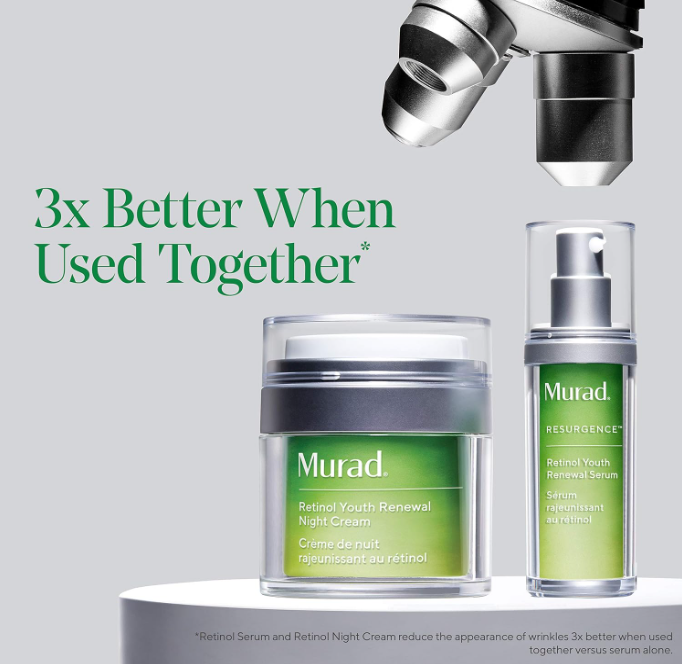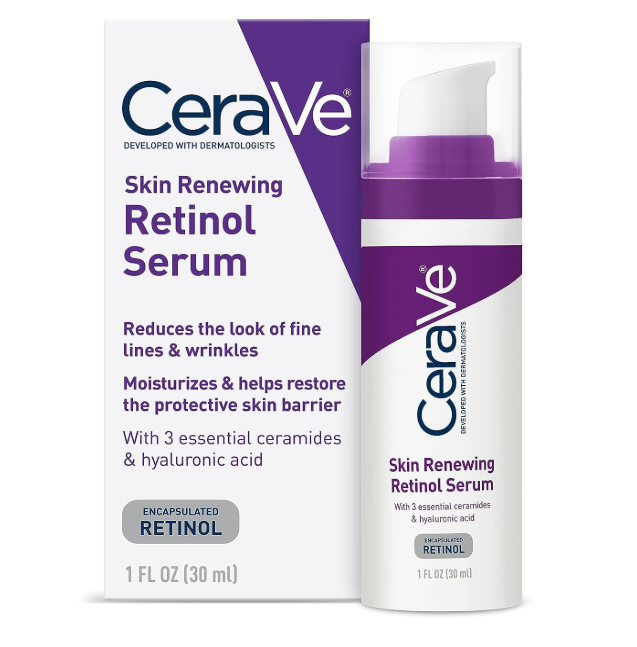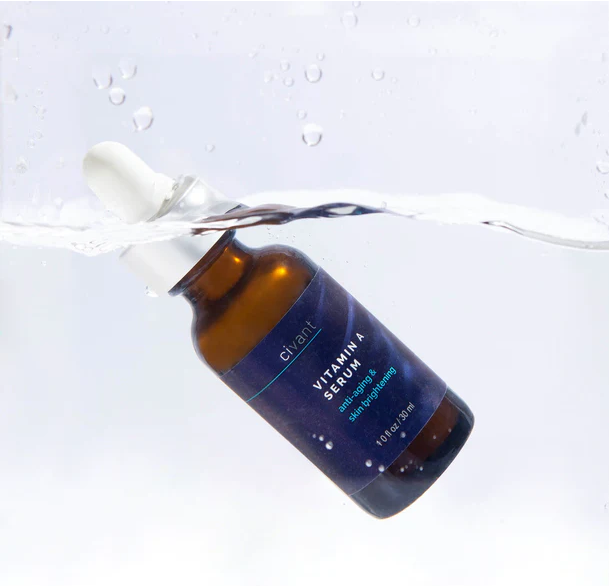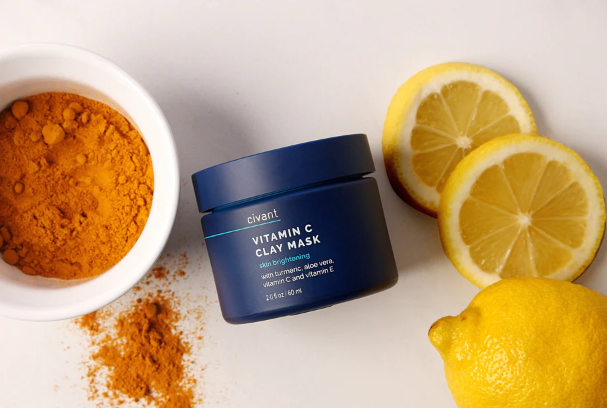As an Amazon Associate, I earn from qualifying purchases.
For many women (and men), achieving a fresh and youthful appearance can become an important goal as the years go by. Fine lines, wrinkles, and loss of volume in the face can sometimes affect self-confidence, leading to a search for methods to rejuvenate one’s look. Among the most popular non-surgical solutions to combat common signs of aging is the use of dermal fillers. But what exactly are these products, and are they safe? In this comprehensive article, we will explore what dermal fillers are, how they work, their potential benefits, and important considerations regarding risks. By the end, you will have a clearer view of whether these cosmetic treatments are right for you or someone you care about.

Understanding the Basics of Dermal Fillers
Dermal fillers, sometimes called “soft tissue fillers,” are injectable substances used to add volume and contour to areas of the face that have lost fullness with age. Over time, skin loses its natural elasticity and plumpness, partly due to the breakdown of collagen and elastin. Environmental factors, genetics, and lifestyle choices can also accelerate these changes, making fine lines and wrinkles more pronounced. Dermal fillers can help address such issues without invasive surgery by providing immediate volume to specific areas.
These injectable treatments are most commonly used around the cheeks, lips, jawline, and areas around the mouth. The substances used in dermal fillers can vary widely—from hyaluronic acid-based products to formulations containing microscopic spheres or even collagen extracted from donors. Each type has its unique qualities, longevity, and potential side effects. Despite the differences, all dermal fillers share a common purpose: to help restore or enhance facial volume and create a smoother, more youthful contour.
A Brief History of Dermal Fillers
Although dermal fillers may seem like a modern cosmetic marvel, the quest to restore facial volume dates back several decades. Early forms of injectables involved collagen derived from bovine sources. While these solutions offered promising results, they often came with a higher likelihood of allergic reactions and tended to break down more quickly. Over time, the development of alternative fillers, including synthetic substances and laboratory-grown hyaluronic acid, improved both safety and longevity.
In the 2000s, hyaluronic acid fillers became more common due to their versatility and the natural way they integrate into the skin. This substance is found naturally in the human body, making adverse reactions relatively rare compared to older filler types. The fillers we see today are highly specialized, and practitioners have refined techniques that make them safer than ever. They offer an array of options, from softer, more flexible products for the lips to denser solutions designed to restructure the jawline or fill deeper wrinkles.
How Dermal Fillers Work
Regardless of the type of dermal filler chosen, the underlying mechanism is relatively similar. The practitioner injects the product into specific areas beneath the skin’s surface. Once the filler material is in place, it adds volume and may stimulate the body’s natural collagen production. The immediate effect is a plumper, smoother appearance in the treated area, which can last anywhere from a few months to several years depending on the product used.
The injection process is usually quick and performed in a clinical setting. Many dermal fillers come mixed with a small amount of local anesthetic to minimize discomfort. In other cases, a topical numbing cream may be applied before the procedure. The specific technique and depth of injection will depend on the target area, the patient’s facial anatomy, and the desired outcome.
Post-injection, the filler integrates into the tissue, drawing water molecules or initiating beneficial effects that enhance volume. Over time, the product naturally breaks down, which is why periodic maintenance treatments might be necessary if one wishes to maintain the initial result.
Common Ingredients in Dermal Fillers
1. Hyaluronic Acid (HA):
Hyaluronic acid is a substance naturally found in the body, particularly in the skin and joints. When used as a filler, HA is typically formulated as a clear gel. It can help retain moisture within the skin, providing an immediate volumizing effect. HA fillers are a top choice for many first-time users because they are less likely to cause adverse reactions, and there is a specialized enzyme that can dissolve them if any complications or overcorrections occur.
2. Calcium Hydroxylapatite (CaHA):
This compound is a synthetic version of a mineral found in human bones. When used in dermal fillers, it is typically suspended in a gel that holds the microspheres of calcium-based particles. The product not only adds immediate volume but can also encourage the body to produce more collagen over time. CaHA-based fillers are often used to treat deeper wrinkles and folds, and their effects can last a bit longer than some HA options.
3. Poly-L-Lactic Acid (PLLA):
Rather than provide immediate filling, PLLA stimulates collagen production gradually. Over the course of several weeks or months, this synthetic material encourages the body to replace lost collagen, resulting in a more subtle yet long-lasting improvement in facial volume. Multiple treatment sessions are often required to achieve the desired outcome with PLLA.
4. Polymethyl Methacrylate (PMMA):
PMMA fillers contain microscopic beads suspended in a gel, sometimes combined with collagen. These beads remain in place beneath the skin, providing a permanent scaffold for tissue growth. While the results can last a very long time, PMMA fillers also carry a higher risk of complications if they are not placed with skill and precision.
Popular Treatment Areas
Dermal fillers are renowned for their versatility. While their most famous role might be lip enhancement, they are also commonly used to lift the cheeks, smooth out nasolabial folds, address marionette lines near the mouth, and fill in hollows under the eyes. Some practitioners use fillers to reshape the jawline, correct a receding chin, or even perform non-surgical nose reshaping.
Because each area of the face has unique anatomical considerations—such as muscle structure, blood vessel density, and skin thickness—it is important that a practitioner is well-versed in facial anatomy. They must also know how the chosen filler performs in the deeper layers of the skin. A carefully chosen filler can produce natural-looking results that harmonize with a patient’s overall appearance rather than create an obviously altered or “overfilled” look.
The Benefits of Dermal Fillers
- Non-Surgical Approach:
One of the biggest benefits of dermal fillers is that they can provide noticeable improvements without the need for surgery. This means less downtime, fewer complications, and the flexibility to address specific problem areas. Unlike a surgical facelift, fillers allow for a more conservative approach that can be adjusted gradually over time. - Quick Procedure and Immediate Results:
Many people appreciate that the injection process itself is relatively fast—often taking under an hour—and that the added volume is visible almost immediately. This makes dermal fillers an attractive option for anyone seeking a quick refresh in preparation for an event or photo shoot. Minimal downtime also means you can return to your usual routine fairly quickly. - Customizable and Versatile:
The wide variety of filler types, densities, and formulations allows for customization that caters to individual facial structures and personal goals. Someone who wants a subtle lip enhancement can opt for a softer filler, while someone with deeper wrinkles might benefit from a more robust product. This versatility extends beyond the face; some fillers can also be used to rejuvenate hands or earlobes. - Collagen Stimulation:
Fillers like calcium hydroxylapatite or poly-L-lactic acid are known to prompt the body to create more collagen in treated areas. This results in ongoing improvements in skin quality that can persist even after the filler material itself starts to break down. - Temporary Options Available:
For those unsure about making permanent changes to their appearance, hyaluronic acid fillers are an excellent choice. They eventually dissolve on their own, providing a “trial run” to see if the new look is something you want long-term. If the results are not to your liking, an enzyme can be injected to dissolve most hyaluronic acid fillers quickly. - Low to Moderate Discomfort:
The treatment typically involves minimal discomfort, especially with the aid of topical anesthetics or fillers pre-mixed with numbing agents. While pain tolerance varies from person to person, most people describe the sensation as a series of small pinches rather than severe pain.
Recognizing the Risks and Potential Complications
While dermal fillers can be a fantastic option for facial rejuvenation, no cosmetic procedure is entirely free of risks. Understanding possible complications is a critical step in deciding whether these treatments align with your needs.
- Bruising and Swelling:
Some degree of bruising and swelling is common, particularly in sensitive areas like the lips. These symptoms typically subside within a week or two, but they can be uncomfortable and inconvenient. Applying a cold compress for short intervals and following your provider’s aftercare instructions usually help alleviate minor side effects. - Lumps and Nodules:
Improper placement or overfilling can lead to lumps or nodules forming under the skin. In some cases, these may require additional injections to dissolve the filler or even minor surgical intervention. A skilled injector typically knows how to minimize the likelihood of these issues. - Allergic Reactions:
Although rare, allergic reactions to certain filler ingredients can occur. That’s one reason why hyaluronic acid fillers are so popular—they are generally well-tolerated by the body. If you have a history of severe allergies, it’s crucial to discuss this with your practitioner beforehand. - Vascular Complications:
One of the most serious risks of dermal filler injections is the accidental injection of filler into a blood vessel or placing pressure on a vessel. This can lead to compromised blood flow, potentially causing tissue damage or even blindness if it occurs around the eyes. While this complication is uncommon, you should ensure your treatment is performed by a properly trained and experienced professional who knows how to respond if such an event arises. - Infection:
Any time the skin is pierced, there is a small chance of infection. Following meticulous hygiene protocols and working with a reputable practitioner can help minimize this risk. If you notice worsening redness, swelling, or pain after your injection, contact a healthcare professional as soon as possible. - Overfilling or “Pillow Face”:
Some individuals worry that they might end up looking unnaturally puffy or distorted after dermal filler injections. Overfilling can occur, but an experienced injector who respects facial proportions can help you avoid this. Honest communication about your expectations is vital to prevent a result that doesn’t feel authentic to you.
Selecting a Qualified Provider
It cannot be stressed enough that the skill and expertise of the person injecting your fillers are paramount in determining both the safety and quality of your results. Seek out professionals who are board-certified in fields such as dermatology, plastic surgery, or facial plastic surgery. These specialists typically have a deep understanding of facial anatomy and can handle any complications that may arise.
During your consultation, ask about your provider’s experience with the specific filler type you’re interested in. Don’t be afraid to request before-and-after photos of previous patients, and be open about any medications or medical conditions you have. A thorough consultation should also involve a frank discussion about your goals, the possible side effects, and realistic expectations for outcomes.
The Injection Process and Recovery
On the day of your appointment, you will likely be asked to arrive without wearing heavy makeup or lotions on the treatment area. The practitioner may apply a topical numbing cream to reduce any discomfort. Then, using either a thin needle or a blunt-tipped cannula, the provider will carefully place the filler beneath your skin.
The number of injections and the amount of filler used can vary widely based on how many areas you want treated and the desired level of correction. You might experience mild tenderness, redness, or swelling immediately afterward. For most people, these effects subside enough within a couple of days that you can return to normal activities. However, it’s generally advised to avoid strenuous exercise, saunas, or any activity that increases blood flow to the face for the first 24 to 48 hours. This helps minimize swelling and bruising.
Dissolving Fillers
One of the unique advantages of certain dermal fillers, particularly those based on hyaluronic acid, is that they can be dissolved by injecting an enzyme called hyaluronidase. This is reassuring for anyone concerned about less-than-ideal results or complications, as it provides a safety net for reversing the treatment. Not all fillers have an “undo” button, though. Synthetic fillers, such as PMMA or PLLA, do not dissolve easily and may require more invasive methods if correction is needed.
Understanding the reversibility of the filler you choose is an important part of deciding which product is best for you. This is especially relevant if you are new to cosmetic injectables and want the option to revert quickly should the outcome differ from your expectations.
Who Makes a Good Candidate?
Generally speaking, adults looking to address moderate to severe wrinkles, restore facial volume, or enhance certain facial features can be good candidates for dermal fillers. Ideal candidates are usually in good overall health, have realistic expectations, and understand that maintenance treatments will be necessary for long-term results.
Age is not the only factor when evaluating candidacy. Some younger patients may consider fillers for mild corrections or to achieve a particular look, such as fuller lips. Others might have lost facial volume due to weight loss or medical conditions and want to regain a more balanced appearance. Consulting a qualified provider is critical to ensure that dermal fillers are truly the best choice for your individual needs.
Longevity of Results
The duration of results depends on the specific type of filler used, the volume injected, and how quickly your body metabolizes the product. As a rough guideline:
- Hyaluronic Acid Fillers: Typically last between 6 to 18 months.
- Calcium Hydroxylapatite (CaHA): May last up to 12 to 18 months, sometimes longer.
- Poly-L-Lactic Acid (PLLA): Effects can last over 2 years, although multiple sessions are usually required.
- Polymethyl Methacrylate (PMMA): Can provide semi-permanent to permanent results.
Lifestyle factors like smoking, significant weight changes, and sun exposure can affect how long the filler maintains its shape and volume. Regular touch-up appointments can help preserve the original effects and ensure a consistent look over time.
Comparing Dermal Fillers to Other Cosmetic Treatments
Dermal fillers are not the only route for those seeking a younger-looking appearance. Botulinum toxin injections, such as Botox, can be more effective for dynamic wrinkles caused by muscle movement, like frown lines and crow’s feet. Laser treatments address concerns like skin texture, pigmentation, and scarring. Chemical peels can improve skin tone and texture as well. Each of these approaches works differently, so there is no one-size-fits-all solution.
In fact, many individuals combine dermal fillers with other treatments for a more comprehensive rejuvenation plan. For example, pairing a neurotoxin to reduce muscle movement with a filler to add volume can yield balanced, natural-looking results. Coordination of treatments and adequate spacing between appointments is crucial to avoid complications. If you’re considering multiple procedures, discuss a multi-step plan with a qualified provider who can time each treatment safely and effectively.
Social and Emotional Considerations
Cosmetic treatments are personal decisions that often come with emotional and societal implications. It’s normal to feel excited or even a bit nervous about undergoing any form of cosmetic enhancement. Some people find that dermal fillers boost their self-esteem, making them more confident in social and professional situations. Others worry about negative judgments from peers or family members who might not understand their desire for these procedures.
If you’re concerned about societal stigma, remember that many individuals have found dermal fillers to be a helpful tool in aging gracefully on their own terms. Ultimately, the choice is yours. Focus on how you feel rather than external opinions. If the decision to get dermal fillers is made with proper research, guidance, and realistic expectations, the outcome can be very satisfying and affirming.
Cost Considerations
The cost of dermal fillers can vary significantly depending on the type of filler, the amount needed, and the region in which you live. Some fillers are more expensive due to their advanced formulations or longer-lasting results. Generally, you can expect a per-syringe cost that ranges from several hundred to over a thousand dollars. Providers often recommend multiple syringes to achieve optimal results in certain areas. While this can add up, many people find that the confidence and positive self-image gained from the treatments are well worth the investment.
Keep in mind that choosing a qualified, experienced injector should be your priority over cost. Bargain deals or unlicensed providers can lead to complications that require even more money to fix later. Your safety and the success of the treatment depend on entrusting your face to someone who has the necessary expertise and credentials.
Future Trends in Dermal Fillers
As technology and research continue to evolve, so do the possibilities in the realm of dermal fillers. Ongoing studies aim to develop more advanced formulations that can last longer and integrate even more seamlessly with human tissues. Some researchers are exploring innovative techniques that combine fillers with stem cells or other growth factors to further boost collagen production and skin rejuvenation.
Additionally, there is growing interest in niche applications, such as using fillers to address aging on the neck, chest, and other areas traditionally treated with surgical methods. As more data emerges, we may see an even wider range of solutions that offer high efficacy with minimal downtime and fewer side effects. However, regardless of how advanced or modern the filler might be, a crucial factor will always be finding a trained professional and having realistic expectations.
Practical Tips and Final Advice
- Have a Thorough Consultation: Always schedule a detailed consultation before any cosmetic procedure. Discuss your medical history, the look you hope to achieve, and any apprehensions you might have. This helps the provider select the most suitable type of filler and injection technique.
- Plan for Recovery: Although dermal fillers generally require little to no downtime, you may want to avoid major social events for a few days in case you experience swelling or bruising.
- Follow Post-Treatment Instructions: Your provider may recommend that you skip strenuous exercise, wear sunscreen, or refrain from certain facial treatments for a short period. Adhering to these guidelines ensures the best possible outcome.
- Manage Expectations: While dermal fillers can produce impressive results, they are not magic potions. Too much filler can lead to an unnatural look, and you may need more than one session to get the subtle transformation you’re aiming for.
- Know When to See a Professional: If you experience severe pain, vision changes, or any signs of infection after the procedure, contact a healthcare professional immediately. Early intervention can prevent more serious complications.
Conclusion
Dermal fillers have come a long way from their early inception, evolving into a widely accepted and versatile form of cosmetic rejuvenation. They offer immediate and often dramatic results that can help individuals feel more confident in their appearance. Yet, these benefits must be weighed against the potential risks, which underscores the importance of working with an experienced and trustworthy professional.
Ultimately, whether dermal fillers are right for you depends on your aesthetic goals, lifestyle, and personal comfort with medical procedures. For many, fillers provide a sweet spot—a non-surgical, customizable method to address signs of aging or to enhance certain features. They can be especially appealing if you prefer a more gradual, step-by-step approach to facial rejuvenation.
As with any medical treatment, the key lies in research, preparation, and open communication. If you decide to move forward, keep in mind that dermal fillers are not a panacea. They are tools that can help you project the best version of yourself—but they work best when used judiciously and as part of a healthy skincare and self-care regimen. By focusing on realistic goals and selecting a qualified provider, you set yourself up for a safe experience and a result that can truly enhance your natural beauty.
Resources
Below is the list of resources used to inform the writing of this article. Please note that no direct quotes were used, and no in-text citations have been provided. These links are included for readers who wish to learn more about dermal fillers:
- Harvard Health Blog: Dermal Fillers
- National Center for Biotechnology Information – PMC Article
- Plastic Surgery News: Risks and Rewards of Dissolving Filler
- Cleveland Clinic: Dermal Fillers
Does Murad Retinol Youth Renewal Serum Work? | Skincare Review | Anti-Aging
As an Amazon Associate, I earn from qualifying purchases. What is the Murad Retinol Youth Renewal Se…
What Are Dermal Fillers? Find Out About The Benefits And Risks
As an Amazon Associate, I earn from qualifying purchases. For many women (and men), achieving a fres…
What Are The Best Anti Aging Ingredients? Find Out Which Work And Which To Avoid…
As an Amazon Associate, I earn from qualifying purchases. Aging is a natural part of life, yet many …
CeraVe Anti-Aging Retinol Serum Review | Skincare Review
As an Amazon Associate, I earn from qualifying purchases. What is the CeraVe Anti-Aging Retinol Seru…
Vitamin A Serum By Civant Skincare – Skincare Review | Anti Aging
As an Amazon Associate, I earn from qualifying purchases. What is the Vitamin A Serum? Civant Skinca…
Vitamin C Clay Mask By Civant Skincare – Product Review | Anti Aging
As an Amazon Associate, I earn from qualifying purchases. Civant Skincare has gained a reputation fo…






